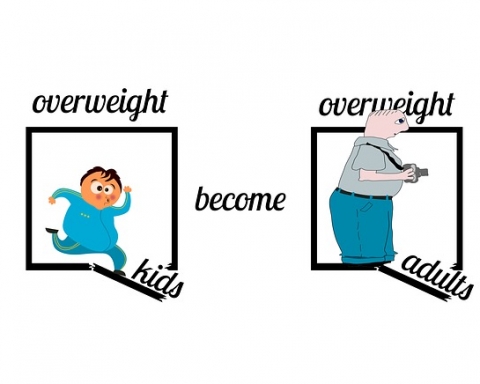Obesity is a metabolic disorder characterized by an excessive accumulation of fat in the body to an extent which adversely affects the health of an individual. It is a direct consequence of perpetual imbalance between energy intake and expenditure with storage of extra calories in the form of fat in the adipose tissue (Ainsle et al., 2000). It is increasing probably, as a consequence of easily available junk food and an increasingly sedentary lifestyle. Thus it can be appropriately termed as New World Syndrome or Disease of Civilization (Popkin et al., 1998).
In obesity, there is an increase in intake of high fat and high energy food and a decrease in daily energy expenditure (Labib, 2003). Diet and physical exercise remain as main stay in obesity management; nonetheless antiobesity drugs may be required either to reduce appetite or to inhibit fat absorption (Freemask et al., 2001). However various medications tried for effective treatment of obesity, effective medication still lacking.
In severe cases, surgery may be performed or an intra gastric balloon may be placed to reduce stomach volume and or bowel length, leading to earlier satiation and reduced ability to absorb nutrients from food (Argand et al., 1993; Augstein et al., 2009). Accumulation of fat or triacylglycerol, is essentially the only way by which the body weight can become excessive, as other energy storage does not have the potential to exceed the limits of requirement.
Obesity is a unfrightful condition that has led the world to know about its serious frightful outcomes in the form of morbidities develop from the serious diseases such as cardiovascular diseases, sexual disabilities, abnormal body growth, hypertension etc while genetically obesity has make the world to observe the most frightful consequences in the form of disease that has increased the death outcome and other disabilities. Obesity is slowly progressive disorder and has a vast affects that led the body down and eventually disable brain including other systems causing serious troubles.
In other ways obesity can also be defined as the problem of energy balance which includes social, cultural, behavioral and genetic factors. This can be summarized as whenever intake of energy exceeds while expenditure falls, it leads to storage of the triglycerides in the organ which leads to obesity. White adipose tissue or white fat is the main tissue that gets energy storage. The peripheral mechanism which is responsible for energy expenditure and hypothalamus which is responsible for controlling feeding behavior has been investigated and still hunt is carried out. Adipose tissue which has been centralized as the target from a long time ago is still recognized as the receiver and activator.
[wp_ad_camp_1]
World health organization defines obesity as an excess accumulation of fat in body with adverse effects on body (WHO 2000). There are various factors which are responsible for the obesity combining genetic factors, socioeconomic factors, chemical and biological factors. Normal weight individuals who have low subcutaneous fat mass but increased visceral fat mass have more chances to develop cardiometabolic risk (Thomas et al., 2012) while insulin sensitive but healthy obese may be protected against obesity induced metabolic diseases (Kloting et al., 2010; Stefan et al., 2008; Wildman et al., 2008; Matthias et al., 2013).
The genetic factors plays a vital role in the development of obesity which are responsible for the obesity but these are very difficult to isolate from humans hence to discover such medicines is very difficult which can prevent genetic obesity. It has been found that 33% of genetic factors are responsible for the development of obesity which is associated with the environmental factors. The environmental factors distributed into lifestyle and socioeconomic factors. In these factors high calorie food and sedentary life styles are the major ones that enhances the chances of obesity (Daniels et al.,2006).
Obesity is measured in BMI, peoples having BMI more than 30kg/m2 are considered as obese (WHO 2000). As the BMI increases it leads the generations of fatal diseases such as hypertension, cancer and musculoskeletal and not to forget metabolic disorder (type – 2 diabetes) (Poirier et al., 2008; Mittendorfer et al., 2008) with increase in BMI (body mass index) morbidity and mortality rises (Orzano et al., 2004). For the healthy body it’s suggested to make energy expenditure equivalent to that of energy intake. The energy expenditure includes physical exercises resulting liberation of energy which further is used for the treatment of obesity and also as the target of developing drugs.
Development of Antiobesity drugs has added a new research area of interest meanwhile consumption of food among peoples has become questionable. For the prevention of obesity and its resulting co morbidities it is more important to make peoples aware of what to eat, how much to eat and how to reduce calories.
Author Bio
Reference
Argand D, Roth H, Wiernsperger N, Leverve XM. Metformin decreases gluconeogenesis by enhancing the pyruvate kinase flux in isolated rat hepatocytes. European Journal of Biochemistry 1993 ; 213: 1341- 1348.
Augstein P, Salzsieder E. Morphology of pancreatic islets: A time course of pre–diabetes in Zucker Fatty Rats. Methods Mol Biol 2009; 560: 159-89.
Daniels SR. The consequences of childhood overweight and obesity. Future Child 2006; 16: 47–67.
Freemask M and Busey D. The effects of metformin on body mass index and glucose tolerance in obese adolscents with fasting hyperinsulinemia and a family history of type – 2 diabetes. Pediatrics 2001; 107 : E55
Klöting N, Fasshauer M, Dietrich A. Insulin-sensitive obesity. American Journal of Physiology – Endocrinology and Metabolism 2010; 299: E506–E515.
Labib, The investigation and management of obesity. J Clin Pathol 2003; 58: 17-25.
Matthias. Adipose tissue dysfunction contributes to obesity related metabolic diseases. Best Practice & Research Clinical Endocrinology & Metabolism 2013; 1-15.
Mittendorfer B, Peterson LR. Cardiovascular consequences of obesity and targets for treatment. Drug Discov Today Ther Strat 2008; 5: 53–61.
Orzano AJ, Scott JG. Diagnosis and treatment of obesity in adults: an applied evidence-based review. J Am Board Fam Pract 2004; 17: 359–369.
Poirier P, Eckel RH. Cardiovascular consequences of obesity. Drug Discov Today Ther Strat 2008; 5: 45–51.
Popkin BM and Bray GA. Dietary fat intake does affect obesity. Am J Clin Nutr 1998; 68: 1157-73.
Stefan N, Kantartzis K, Machann J. Identification and characterization of metabolically benign obesity in humans. Archives of Internal Medicine 2008; 168: 1609 1616.
Thomas EL, Parkinson JR, Frost GS. The missing risk: MRI and MRS. Phenotyping of abdominal adiposity and ectopic fat. Obesity (Silver Spring) 2012; 20: 76–87.
Wildman RP, Muntner P, Reynolds K. The obese without cardiometabolic risk factor clustering and the normal weight with cardiometabolic risk factor clustering: prevalence and correlates of 2 phenotypes among the US population (NHANES 1999–2004). Archives of Internal Medicine 2008; 168: 1617–1624.
World Health Organisation. Obesity: Preventing and managing the global epidemic (WHO Technical report series No. 894). Geneva. 2000. WHO.
Important
Enjoy
[wp_ad_camp_2]









